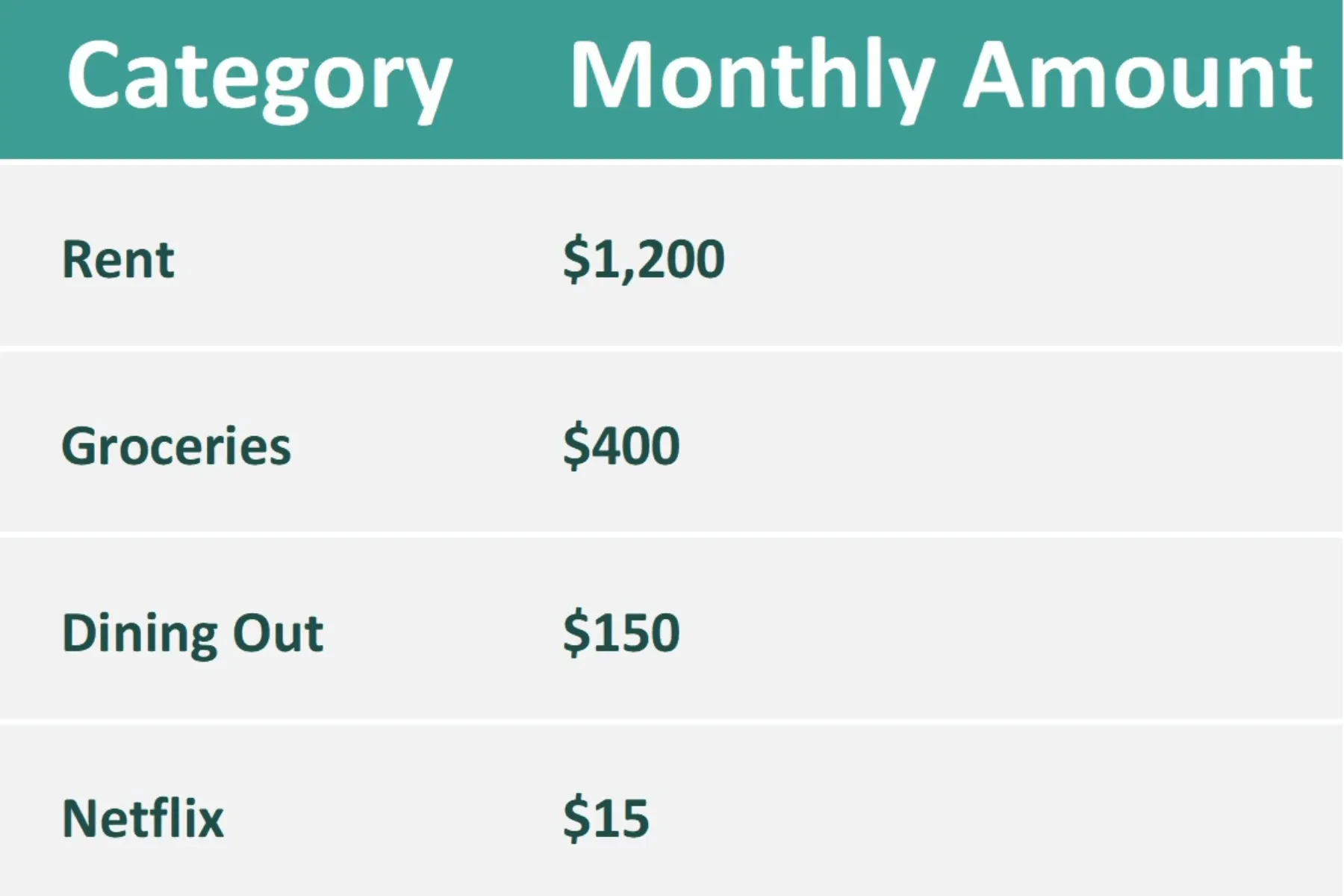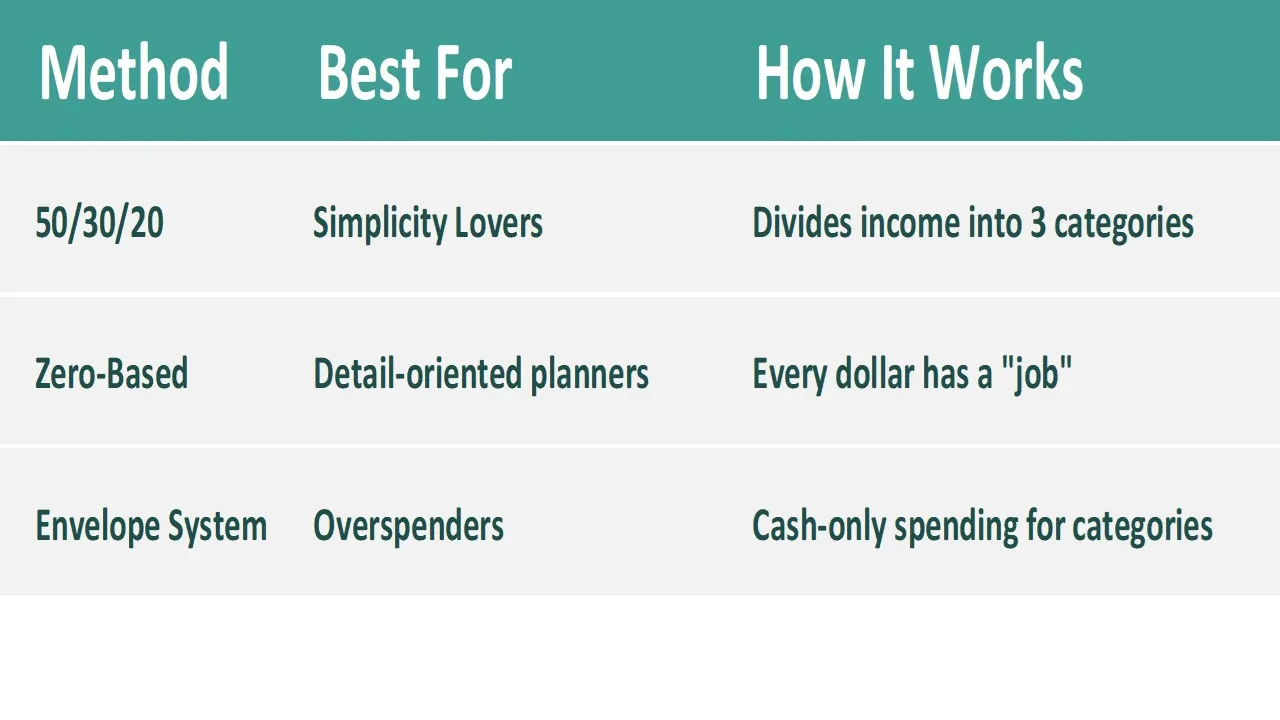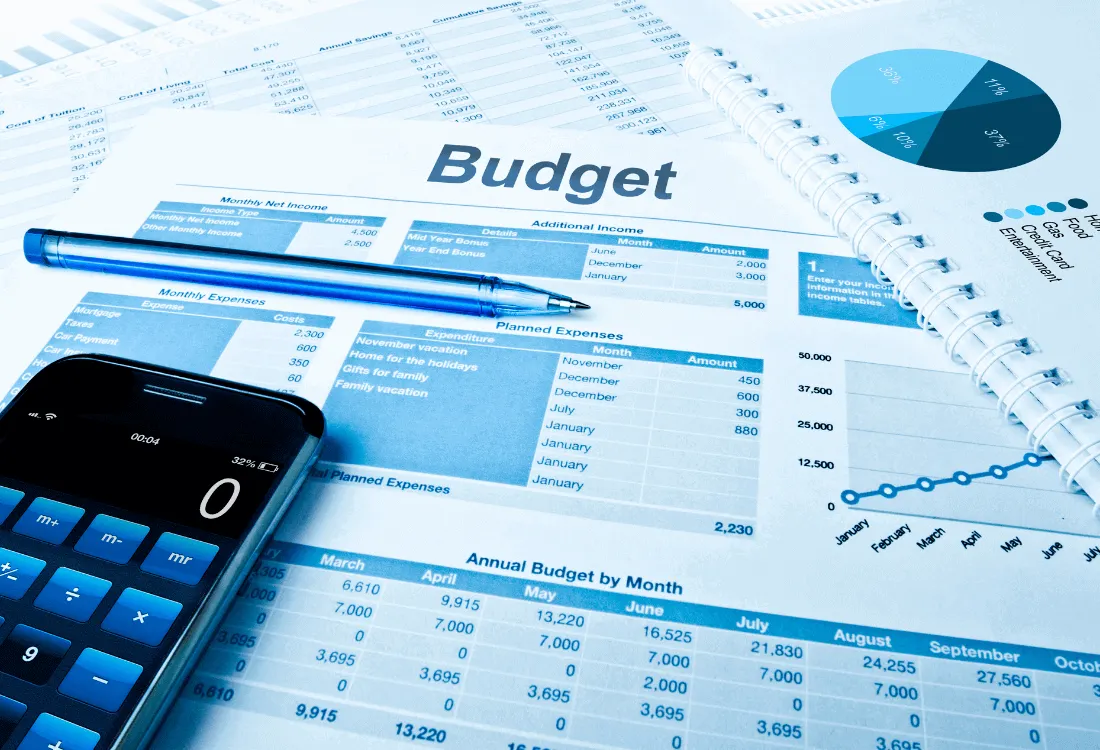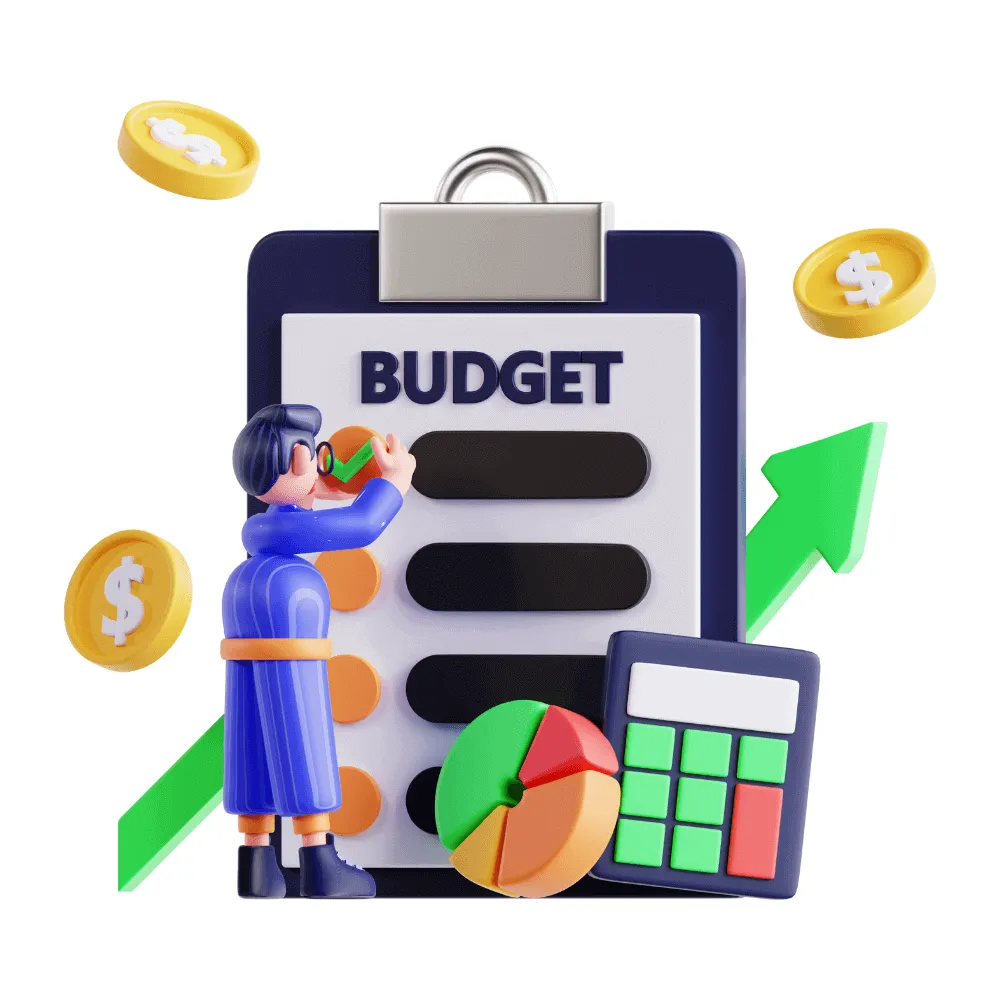How to Budget Money: A Stress-Free Guide for Every Income Level
Does your bank account ever surprise you—and not in a good way? Ever opened your bank account and wondered, “Where did it all go?”
You’re not alone. Nearly 60% of Americans don’t track their spending, leaving them anxious and stressed about their finances and unprepared for emergencies. Yet only 40% actually use a budget.
But here’s the good news: learning how to budget money is about freedom, not a restriction. It’s about making your income work harder so you can live better.
This guide will show you how to create a flexible, realistic budget tailored to your income, lifestyle, and goals. Let’s transform your financial chaos into clarity.

Key Takeaways
- Start small: Track spending for one week.
- Stay flexible: Adjust your budget as life changes.
- Celebrate wins: Paid off a debt? Treat yourself (modestly!).
Why Budgeting Matters
Budgeting matters because it provides a clear roadmap for managing your money, ensuring that your income covers essential expenses while allowing for savings and financial goals.
Without a budget, it’s easy to overspend, fall into debt, or struggle with unexpected expenses. A well-structured budget helps you prioritize needs over wants, reduce financial stress, and build long-term stability.
Whether you have a fixed salary or irregular income, budgeting empowers you to take control of your finances, avoid financial pitfalls, and create a secure future.
A budget is your financial GPS. It helps you:
- Stop living paycheck-to-paycheck
- Avoid overspending
- Save for big goals and emergencies
- Hit milestones (like vacations, homeownership, or early retirement)
- Sleep better
Without a plan, even high-earners struggle. The key? Building a system that adapts to your life.
How to Budget Money: 5 Simple Steps
1. Know Your Numbers
Start by tracking every dollar you earn by listing all income sources (salary, side gigs, investments) and every expense for 30 days. You may use apps like Mint or a simple spreadsheet.
Example:

2. Set Realistic Goals that Actually Excite You
Prioritize what matters most:
- Short-Term: Build a $1,000 emergency fund.
- Long-Term: Save 20% for a home down payment.
Rule of Thumb: Allocate income using the 50/30/20 method:
- 50% Needs
- 30% Wants
- 20% Savings/Debt
Try the 50/30/20 Rule:
- 50% Needs: Rent, groceries, insurance
- 30% Wants: Travel, concerts, brunch
- 20% Savings/Debt: Emergency fund, retirement, student loans
3. Choose a Budgeting Style that Matches your Personality
Pick a method that fits your personality:

4. Automate and Adjust
One of the easiest ways to stay on track with your budget is to automate your savings. Setting up automatic transfers to separate accounts ensures that you prioritize saving before you have the chance to spend impulsively.
For example, you can schedule a portion of your paycheck to go directly into a high-yield savings account, a retirement fund, or an emergency fund. Many banks and budgeting apps allow you to set up automatic transfers, making the process effortless.
By automating savings, you remove the temptation to skip saving one month because of unexpected expenses or overspending. This "pay yourself first" approach helps you build financial security without having to think about it every month.
In addition to automating your savings, it's crucial to review and adjust your budget regularly. A monthly review allows you to assess whether you're staying within your spending limit, if you need to cut back on certain areas, or if you can allocate more funds toward your financial goals.
If you receive a raise or a financial windfall, a smart rule of thumb is to allocate 50% of the increase to savings or debt repayment and the other 50% toward discretionary spending.
This balanced approach helps you grow your wealth while also enjoying the benefits of your hard work. By consistently fine-tuning your budget, you can make sure your financial plan evolves with your lifestyle and future goals.
5. Prepare for Surprises
Life is unpredictable, and unexpected expenses—whether it’s a medical emergency, car repair, or job loss—can derail even the most well-planned budget. That’s why preparing for surprises is a crucial step in financial planning.
The first line of defense is building an emergency fund that covers three to six months’ worth of essential living expenses. This financial cushion ensures that when an emergency arises, you won’t have to rely on credit cards or loans, which can lead to long-term debt. Experts recommend keeping this fund in a high-yield savings account so it remains accessible while earning interest.
Beyond an emergency fund, maintaining a "flex" category in your monthly budget provides additional protection. This category accounts for unexpected but minor expenses, such as last-minute gifts, appliance repairs, or a sudden increase in utility bills.
Setting aside even a small percentage of your income for this purpose prevents you from dipping into savings for everyday surprises. By incorporating these two strategies, you create a resilient budget that adapts to life’s uncertainties without compromising your financial stability.

Budgeting on Irregular Income
Budgeting on irregular income is essential because financial stability depends not just on how much you earn but how well you manage your earnings.
Freelancers, gig workers, and commission-based employees often experience fluctuations in income, making it crucial to plan ahead. Without a structured budget, a high-earning month might lead to overspending, leaving you struggling when income dips.
The key is to set a baseline budget based on your lowest expected earnings while allocating extra income toward savings, taxes, and future expenses to create a financial buffer.
Consider Sarah, a freelance graphic designer. One month, she lands several big projects, earning $8,000, but the next, she barely makes $2,500. If Sarah treats every high-earning month as an excuse to splurge, she may struggle to pay rent during lean periods.
Instead, she follows a budget based on an average income of $4,500, saving any excess earnings in an emergency fund and for taxes. By doing so, she ensures financial stability even in slow months, allowing her to focus on work without constant money worries.
Budgeting on irregular income isn’t about restriction—it’s about control and financial peace of mind.
Freelancers or gig workers:
- Calculate your baseline: Average monthly earnings from the past 6 months.
- Prioritize essentials first (rent, groceries).
- Save windfalls (bonuses, tax refunds) immediately.
Example:
If you earn $3,000 in a high month and $2,000 in a low month:
- Base budget on $2,000.
- Save the extra $1,000 for lean months.
Tools to Simplify Budgeting
Budgeting can feel overwhelming, but with the right tools, managing your finances becomes much easier. Budgeting apps like YNAB (You Need A Budget) and PocketGuard take the guesswork out of money management by helping you track expenses, set financial goals, and stay accountable.
YNAB follows a proactive approach by assigning every dollar a job, making it ideal for those who want to plan ahead and take control of their spending. PocketGuard, on the other hand, simplifies budgeting by analyzing your income, bills, and savings goals to show you how much "spendable" money you have at any given time.
For those who prefer a more hands-on approach, Google Sheets templates offer customizable budgeting solutions without the need for paid software. Pre-made templates allow users to track income, categorize expenses, and visualize financial trends over time.
Meanwhile, leveraging bank alerts, such as low-balance notifications, ensures you never accidentally overdraft or miss a bill payment. Setting up these alerts helps you stay on top of your account balance, giving you real-time insights into your financial health and preventing costly fees. By combining these tools, budgeting becomes a seamless and stress-free process.
- Apps: YNAB (You Need A Budget), PocketGuard
- Spreadsheets: Google Sheets templates
- Bank Alerts: Set up low-balance notifications
Common Budgeting Mistakes (and Fixes)
Budgeting is a crucial tool for financial stability, yet many people fall into common traps that derail their progress. Understanding these mistakes and learning how to fix them can make the difference between struggling with money and achieving financial freedom. Here are some of the most frequent budgeting pitfalls and how to correct them.
1. Not Tracking Expenses
The Mistake: Many people create a budget but fail to track where their money actually goes, leading to overspending.
The Fix: Use budgeting apps like YNAB or PocketGuard, or simply record every expense in a spreadsheet. Regularly reviewing transactions ensures you stay within limits and spot unnecessary spending.
2. Setting Unrealistic Budgets
The Mistake: Cutting expenses too aggressively or being too strict or setting overly ambitious savings goals can make a budget unsustainable.
The Fix: Create a budget that reflects your actual lifestyle. Instead of eliminating all dining out, set a reasonable cap. Include a “guilt-free” spending category in your budget. Adjust your budget monthly based on real spending patterns.
3. Forgetting Irregular Expenses
The Mistake: Budgeting only for fixed monthly expenses but forgetting about annual costs like car registration, insurance, or holiday gifts.
The Fix: Set up a “sinking fund” for periodic expenses. Divide the total cost by 12 and save a small amount each month to cover them.
4. Ignoring an Emergency Fund
The Mistake: Living paycheck to paycheck without a financial cushion can lead to debt when unexpected expenses arise.
The Fix: Prioritize building a 3–6 month emergency fund. Even setting aside $20 per week can add up over time.
5. Not Adjusting the Budget
The Mistake: Sticking to the same budget despite changes in income, expenses, or lifestyle.
The Fix: Review and adjust your budget monthly. If you get a raise, allocate part of it to savings. If expenses increase, find areas to cut back.
By avoiding these common budgeting mistakes and applying these fixes, you can create a more effective and realistic financial plan that helps you achieve your money goals.
FAQs
1. How do I start budgeting if I have a low income?
Begin by tracking your income and expenses to understand where your money goes. Prioritize necessities like housing, food, and utilities, and look for ways to cut unnecessary spending.
Look for small ways to save, like cooking at home, using coupons, and canceling unused subscriptions. Automate savings, even if it’s just a few dollars per paycheck, to build financial security over time.
2. How much should I save each month?
Aim for 20% of income. Start with 5% and increase gradually.
3. Can I budget with variable income?
Yes! Base your budget on the lowest monthly income you expect. Save extra earnings during high-income months to cover expenses in slower months. Building an emergency fund can also help smooth financial ups and downs.
4. How often should I update my budget?
Review your budget monthly to adjust for changes in income, expenses, or financial goals. Life circumstances evolve, and your budget should reflect those changes to stay effective.
5. What if I consistently overspend?
Identify spending triggers and set limits on discretionary expenses. Use cash-only methods for non-essential purchases, or try envelope budgeting to control spending.
6. How do I stick to a budget?
Automate savings, have a regular review, and remind yourself of your goals--saving for a trip, paying off debt, or building an emergency fund.
Celebrate small wins and remind yourself that budgeting isn’t about restriction—it’s about financial freedom.
Conclusion
Budgeting isn’t a one-size-fits-all task—it’s a skill that grows with you. Whether you earn $30,000 or $100,000, knowing how to budget money puts you in control. Start today: Track your next five purchases, then build from there. Your future self will thank you.
Ready to take charge? Share your first budgeting win with us!






